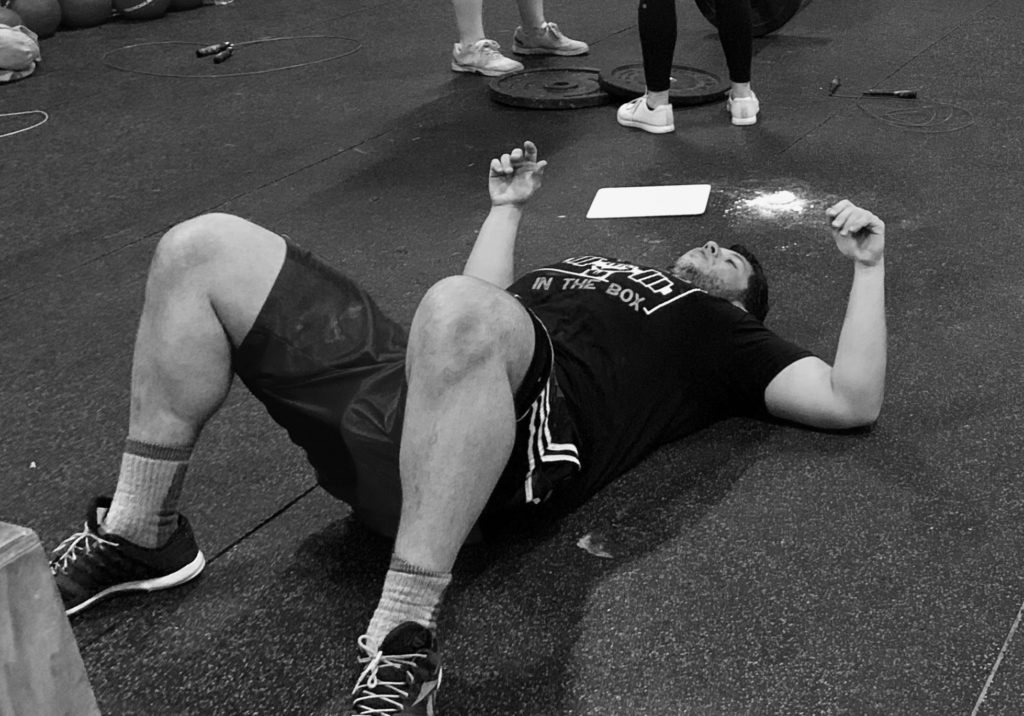In last week’s post we talked about your cooldown, and how it can be used to improve your fitness. One of the main goals of the cool down is to start clearing fatigue. We’re going to delve into that topic a little more this week.

When we train, we accumulate fatigue. This is inevitable. When we train our endurance and muscular stamina, our goal is to improve the amount of work we can do before succumbing to fatigue. We can think of this from a muscular standpoint by looking at our ability to do push-ups. Simple question: how many push-ups can you do in a row before failing? When you hit your failure point, you have succumbed to fatigue. From a systemic point of view, let’s look at your ability to hold a 2:00/500m pace on the rower. How long can you maintain that before you’re forced to slow down? Again, you’ve accumulated too much fatigue and you’re forced to adjust.
Now, we can improve our endurance as previously mentioned, by working on our ability to push. We take shorter rest periods between intervals that require the same effort, and in doing so we build endurance. Sticking with our row example, maybe we do 6x500m rows at 2:00 pace. The first time we do this, we get 2 minutes rest between efforts, then 90 seconds, then 1 minute, etc. Play with work to rest intervals until your heart’s content.
There is another way to improve our endurance and stamina, and that is by improving our body’s ability to clear fatigue. We can do this by making our rest periods more challenging. Instead of complete rest, we perform the same movement pattern that made us tired in the first place, but at a significantly lighter intensity. Instead of manipulating the rest period, we keep it the same, and increase the intensity of the lighter exercise.
What would this look like? Sticking with our push-ups example, let’s say we have 4 rounds of max push-ups in 30 seconds with 1 minute of rest between intervals. The first time you do this, you rest completely for a minute. The next time you do this, after your push-ups, you immediately flip over and perform SUPER SLOW floor presses with a PVC pipe for your minute rest. After that, you use 5 lbs DBs instead of the PVC pipe. Then 10 lbs, then 20, etc.
In our row example, we would go from a 2:00/500m pace in our work intervals to complete rest. The next time, instead of resting, we would row at a super light pace like 4:00/500m. Then, we increase the pace of our “rest” to 3:30/500m, 3:00/500m, etc.
What happens when we do this kind of training? We improve the pace at which we can clear fatigue and push hard once again. Let’s assume we have 2 athletes doing the same metcon:
4 Rounds for Time:
10 Burpees
20 KB Swings (70/55)
1000m Row
The burpees and swings jack up both athlete’s heart rates. They get to the row at the same time, and both have the same max effort 1k row time. However, Athlete A has trained to clear fatigue, and Athlete B has not. As time progresses in this workout, Athlete B will be forced to slow down for longer periods of time on the rower than Athlete A. Or, he will have to slow down more than Athlete A.
In a real world example, after every CrossFit Games workout, Mat Fraser would immediately hop on the Assault Bike and pedal at an easy pace (easy for him, anyway). The Assault Bike uses both arms and legs and gets the whole system involved, so it’s a great way to clear fatigue, but only if you’ve trained to do so. Other athletes that attempted to emulate him at the Games only succeeded in adding more fatigue to their already tired bodies, because they hadn’t established the habit of using the Assault Bike as a clearance mechanism.
Why do we care and how does this impact our training? Well, we’ve recently been working on 400m run intervals in which we vary the intensity every 200m. The goal of this is to use our lighter intensity work to improve our body’s ability to clear fatigue, so that when we perform “Murph,” we can limit how much we need to slow down when we get tired. So, in our last training session with intervals, those athletes who interpreted “near walk” to mean “leisurely stroll” will not get the same benefits as athletes who actually jogged slowly for the “near walk.” As always, we want our athletes to understand the intent behind and purpose of every workout. You just read 797 words explaining ours. See you in the gym.
